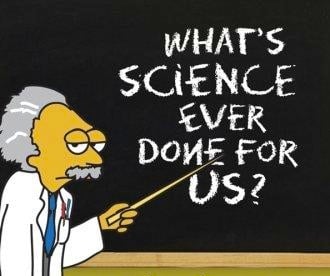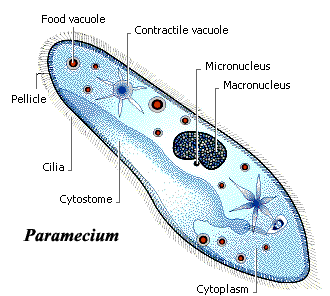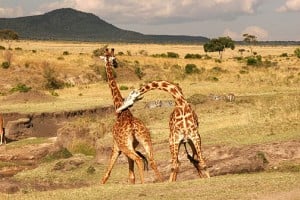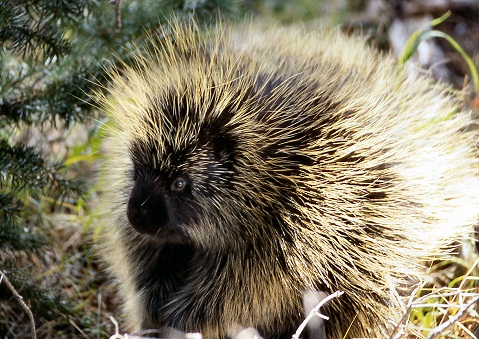 The relationship between scientists, journalists and the public has never been a strong one. When writing about the status of this relationship in the early 1970’s Spencer Weart states that “most scientists already felt they were doing their jobs by pursuing their research and publishing it” (Weart, 2008). Most scientists’ attitude at this point was any work that was important to the public would be picked up by journalists or popular scientists such as Revelle and Bryson. This information could then be distributed to the public in various channels of the media. During the last 20 years this attitude has changed and there is now considerable encouragement and funding available to scientists who communicate with the public. One of the first initiatives to promote this behaviour was the 1985 Bodmer Report. The report argued that it was essential for scientists to communicate with the public. This essay will look at both historical and current examples of science communication and access how communication has changed since the early 1970’s (Davies, 2008).
The relationship between scientists, journalists and the public has never been a strong one. When writing about the status of this relationship in the early 1970’s Spencer Weart states that “most scientists already felt they were doing their jobs by pursuing their research and publishing it” (Weart, 2008). Most scientists’ attitude at this point was any work that was important to the public would be picked up by journalists or popular scientists such as Revelle and Bryson. This information could then be distributed to the public in various channels of the media. During the last 20 years this attitude has changed and there is now considerable encouragement and funding available to scientists who communicate with the public. One of the first initiatives to promote this behaviour was the 1985 Bodmer Report. The report argued that it was essential for scientists to communicate with the public. This essay will look at both historical and current examples of science communication and access how communication has changed since the early 1970’s (Davies, 2008).
Caddisfly larvae show jewellery designers how ‘it’ is done
In 2011 I wrote about a research project I went on in France to investigate how invertebrates can show the level of water pollution in rivers and streams (click here). While I was there, I quickly picked up on the huge diversity of life in rivers, far beyond what we would expect. While searching through one kick sample, I came across a twig which moved and then a little Caddisfly larva emerged – I was fascinated! 
A Sensory Quest: BBC Wonders of Life

The S in MRS GREN, sensitivity, stands for the ability of all living things to detect changes in their environment. To do this we use our senses, a characteristic dating back to virtually the beginning of life. Even simple, single celled organisms can sense their environment and respond to it.
Florida Panther: When will we learn?
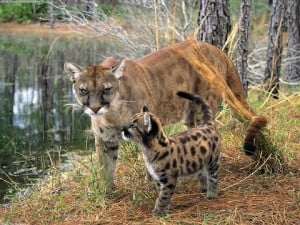 A new year, means a new calendar, and here in the office I have just got mine – and it is animal themed! I have decided at the start of each month I will write a blog about the featured animal. So, lets start the brand new feature to my blog!
A new year, means a new calendar, and here in the office I have just got mine – and it is animal themed! I have decided at the start of each month I will write a blog about the featured animal. So, lets start the brand new feature to my blog!
The Florida Panther
As you might expect, this panther lives in the forests and swamps of southern Florida, and as is to be even more expected in current times, this animal is endangered.
But! The news for these panthers is actually quite positive!
Giraffes: In it for the sex, or something more?
Porcupines show humans how design is done.
Firstly I apologise to my regular readers for not putting up any posts in the last few weeks (months!). My new job is going well, but as I’m sure you can all understand it has taken priority! But do not fear, I’m back, and I’m going to try my best to get posting regularly again!
 When I moved to Cambridge I had a lot of ‘stuff’ I had accumulated, including two very prickly cacti. One of the thorns from the cacti got caught in my finger and, when I tried to pull it out it snapped, so it was stuck in my finger! Highly inconvenient to me, but it did get me thinking about animal and plant defences, as well as the pain they can cause!
When I moved to Cambridge I had a lot of ‘stuff’ I had accumulated, including two very prickly cacti. One of the thorns from the cacti got caught in my finger and, when I tried to pull it out it snapped, so it was stuck in my finger! Highly inconvenient to me, but it did get me thinking about animal and plant defences, as well as the pain they can cause!
Climate change set to shrink fish
 Through most of last year I spent my days researching climate change for my dissertation project. When I started I thought I ‘knew about Climate Change’ – how wrong I was! My dissertation looked at the way in which climate change is predicted to change the global distribution of malaria in the future (click here). Disease is not something that you would necessarily associate with climate change and here is another example of something you might not think was associated with climate change – size.
Through most of last year I spent my days researching climate change for my dissertation project. When I started I thought I ‘knew about Climate Change’ – how wrong I was! My dissertation looked at the way in which climate change is predicted to change the global distribution of malaria in the future (click here). Disease is not something that you would necessarily associate with climate change and here is another example of something you might not think was associated with climate change – size.
Western scrub jay shows funerals aren’t all they seem.
One of the sad facts of life is death. For humans, we have certain practices depending on faith or culture that make the issue of loss more bearable. Indeed many parents get their children pets not just for the lesson of responsibility but also to experience the pain of loss. But how do animals respond to death? Do they mourn for their relatives, or does their ‘animalistic survive or die’ instinct kick in?
Coral trout killed by skin cancer – what happens when sun cream isn’t an option.
During my time at university one of the units I studied that I found was of most ‘practical’ value was “The History of Climate Change”. When I say practical value, I mean it taught me things that are and will be hugely beneficial to my understanding of the climate. One of the things I learnt about was the ozone layer and how human activities have contributed to ozone depletion. The ozone layer surrounds the Earth and is made up of molecules of O3. O3 molecules are not as stable as the O2 we breathe. This means O3 is highly reactive with other molecules such as halogens. How do halogens reach the ozone layer? During the 1980s CFCs (found in fridges and degreasing solvents) were the main cause and contributed significantly to ozone depletion. But why should we worry about ozone depletion?
Bigger is better: the male rhinoceros beetle.
Does size matter? Is it better to be bigger? This is a question we continuously argue about. The question is not a simple one to answer and a simple yes or no will not do. The answer depends on not just the species in question but also the environment in which each individual lives. For example, a relatively large snake living in an environment with little prey will be able to live off its fat reserves, whereas a smaller snake of the same species would not have the same fat reserves. The larger snake may have an advantage in terms of fat reserves, but the smaller snake may have greater agility and ability to capture prey. In short, it is different for everyone, depending on the niche the individual is trying to for fill.
